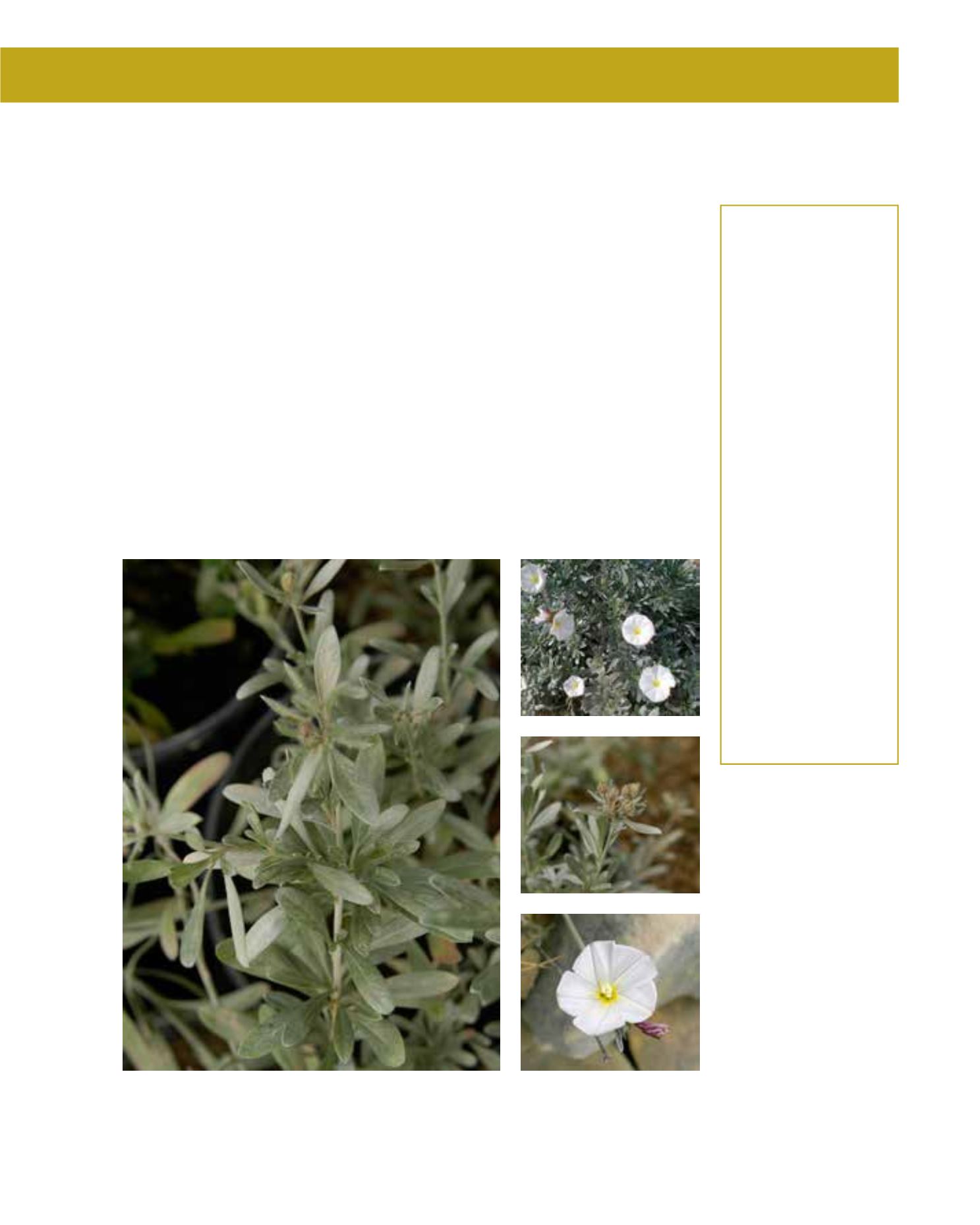

GENERAL
Origin
:
sub-Mediterranean,
Mediterranean
Vigour
:
fairly fast
growing
Humidity
:
semi-arid, semi-
humid
Propagation :
direct sowing,
sowing and
pricking out,
cuttings
Maintenance :
moderate
CONDITIONS
Urban climate :
resistant
Dessication :
vulnerable
Stagnant water :
vulnerable
Irrigation
:
high
Salinity/ppm :
moderate (1500
ppm)
Hardiness
:
-6°C
SHAPE
Type
:
sub-shrub
Height
:
0.3 m-0.8 m
Spread
:
0.7 m-1 m
Foliage
:
evergreen
FLOWER
Colour
:
white, secondary:
pink
Size
:
2 cm - 4.5 cm
Period
:
March - October
FRUIT
Type of fruit :
capsule
Fruit size
:
0.5 cm
The Bush Morning Glory is native to the western Mediterranean basin. In Arriyadh, it requires
a sheltered garden location; its relative, C. mauritanicus, is a potentially good groundcover, but
both plants have a tendency to bare spots, which need replanting every few years. While most
other Morning Glories grow twining, this one remains a prostrate, compact bush of some 80 cm
in height and at least the same in width. In late spring and early summer, pink buds turn into
white, trumpet-shape flowers with yellow throats. They contrast well against the silvery, evergreen
foliage. The leaves are lanceolate, hirsute and well protected against desert conditions. Each year,
Bush Morning Glories put on an impressive floral display. Flowers are some 4 cm in diameter
and grow in panicles. In full bloom, the shrub is almost entirely covered by flowers. This bush
revels in heat and full sun, and tolerates poor, sandy soil with good drainage. Clay soils need to be
friable, since over-watering kills the plant. Alkalinity and drought are tolerated. Plants are even
found growing wild in rock crevices. It makes an area cover in steppe gardens, or looks well as
grouped bush in rock gardens when it sprawls over gravel and boulders. Unsightly plants can be
renewed by cutting back to the ground in early spring. Sprinkler irrigation may cause powdery
mildew. The plants tolerate urban microclimates, frost to about –7°C and some neglect when esta-
blished. Softwood cuttings root easily in late spring or early summer, and sowing is also possible.
116
Convolvulus cneorum,
Convolvulaceae
Silvery Convolvulus,
Bush Morning Glory
















